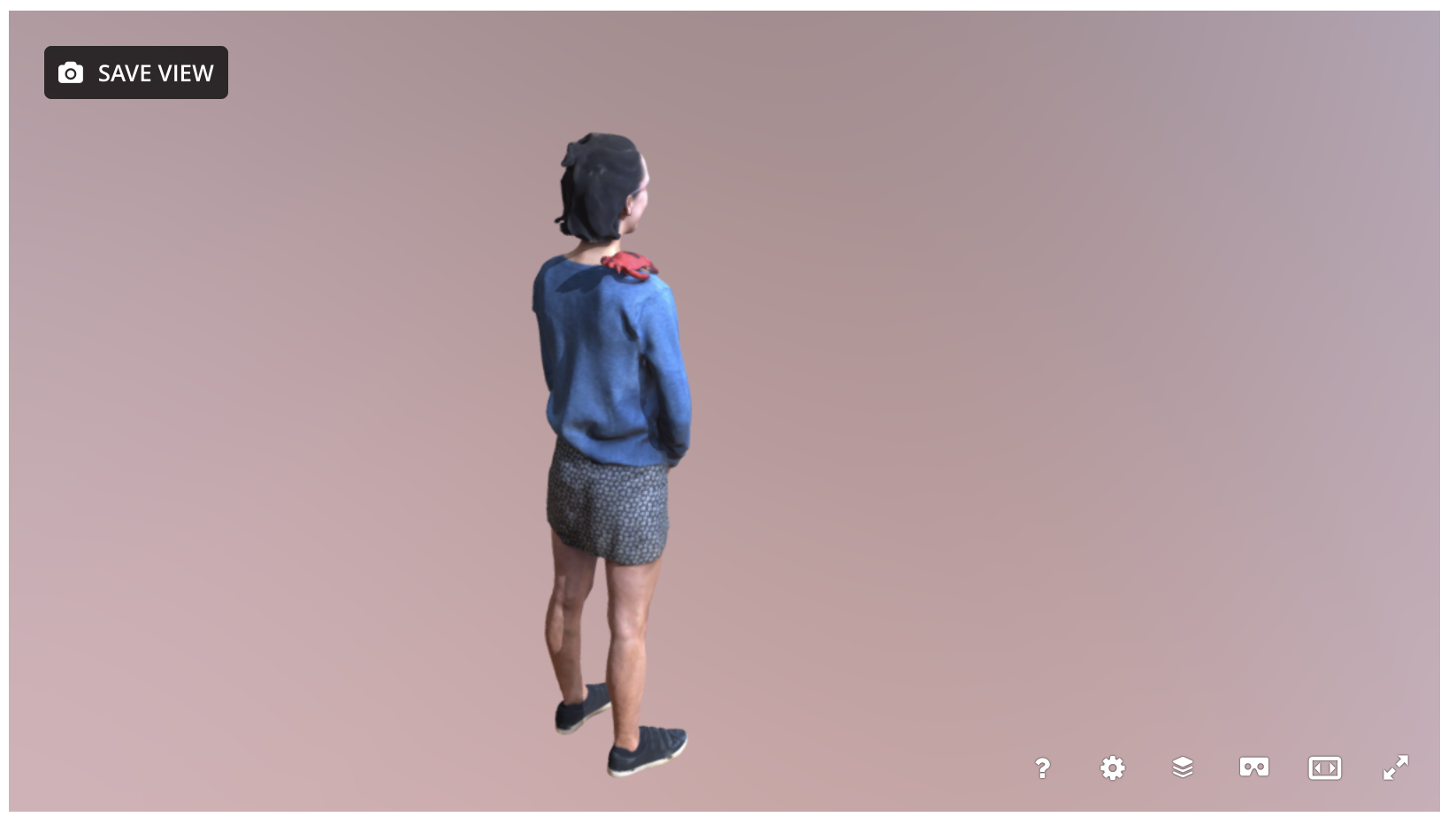Structure Sensor
Jiwon and I tried to scan each other but didn’t have much success. Even when the scan looked OK as we were doing it, the result had holes or discolored patches on it. Jiwon and I both had done previous scans so after five attempts or so we decided to stick with those. But then when we uploaded them to SketchFab they actually looked OK!
It’s hard to tell what worked well and didn’t. I found it hard to work with you can’t know how well the model turned out on the ipad itself. Sometimes it seemed to do better when moving faster. It was most frustrating when the model would get unaligned from the person’s body.
The first time I tried the structure sensor for another Shuju and I tried different poses with objects. We found a plastic crab on the floor that I perched on my shoulder. This is actually my favorite scan even though it can’t be rigged. I don’t have a pet crab or any special connection to them, but I like the dress I’m wearing. I felt a little self conscious though with the result since you can see my varicose vein in my leg - it made we wish the scan wasn’t quite so accurate.
I also like the second one I did because I like the sweater I’m wearing. The sweater bends in weird ways when it’s rigged which I actually like. The hands look bad though because the sensor had trouble capturing them in a T pose, but I kind of like that it looks like the model is breaking or dissolving back into the digital ether.
Reading Discussion Questions
The readings prompted a few questions for me:
Most of the readings were about ownership of entire bodies, but it made me start to think about ownership of parts of bodies. What if people start selling the right to use their body parts in digital environments. This is already happening with asset stores to a certain extent, but what if some people have such desirable virtual body assets that they start being sold for higher and higher prices? Since this is regulated for our physical bodies, should this be regulated for our virtual ones? How many parts make up a “whole” or “likeness”?
I feel very resistant to the use of virtual versions of deceased actors in movies. I feel this way for several reasons, but one question I had was around the motivation for doing this. The reason mostly seems to be because of nostalgia, but what what is nostalgia like for future audiences who are seeing a majority of the actors in their movies played by virtual models of people who aren’t alive anymore. Who or what do they get to be nostalgic for?









